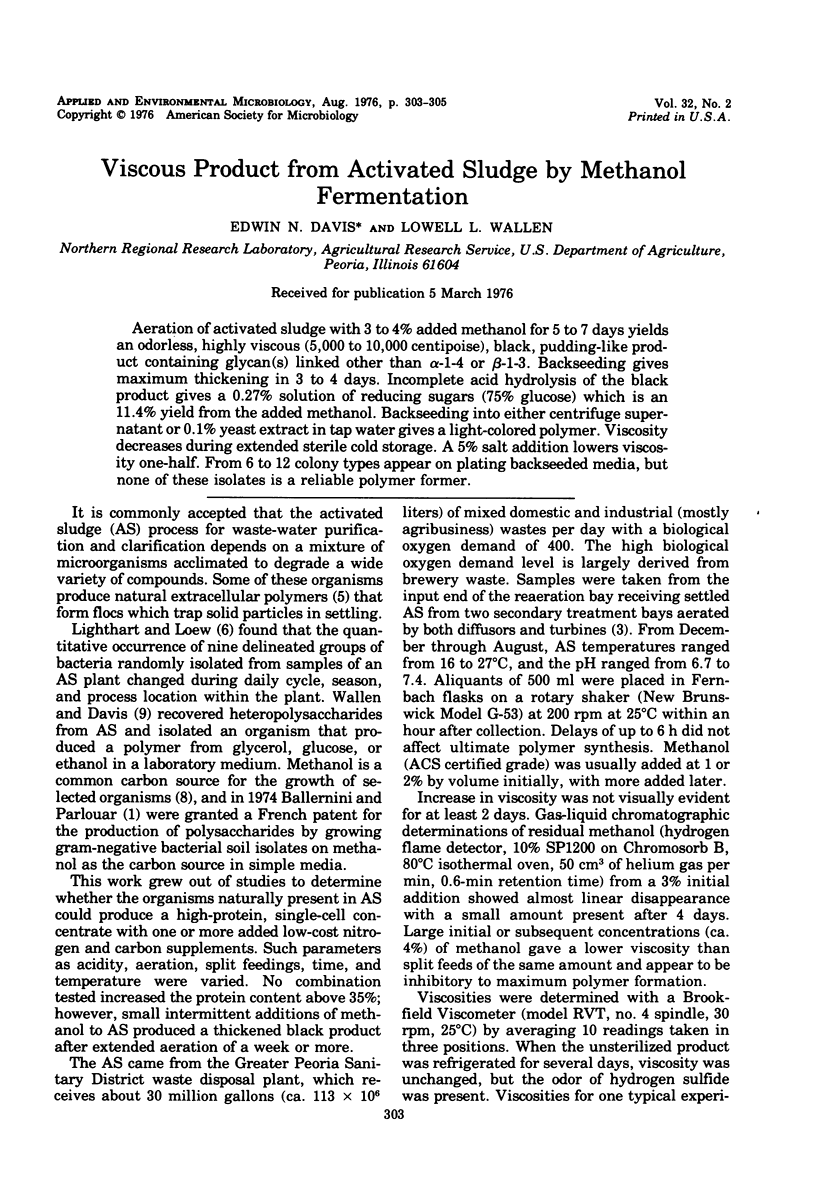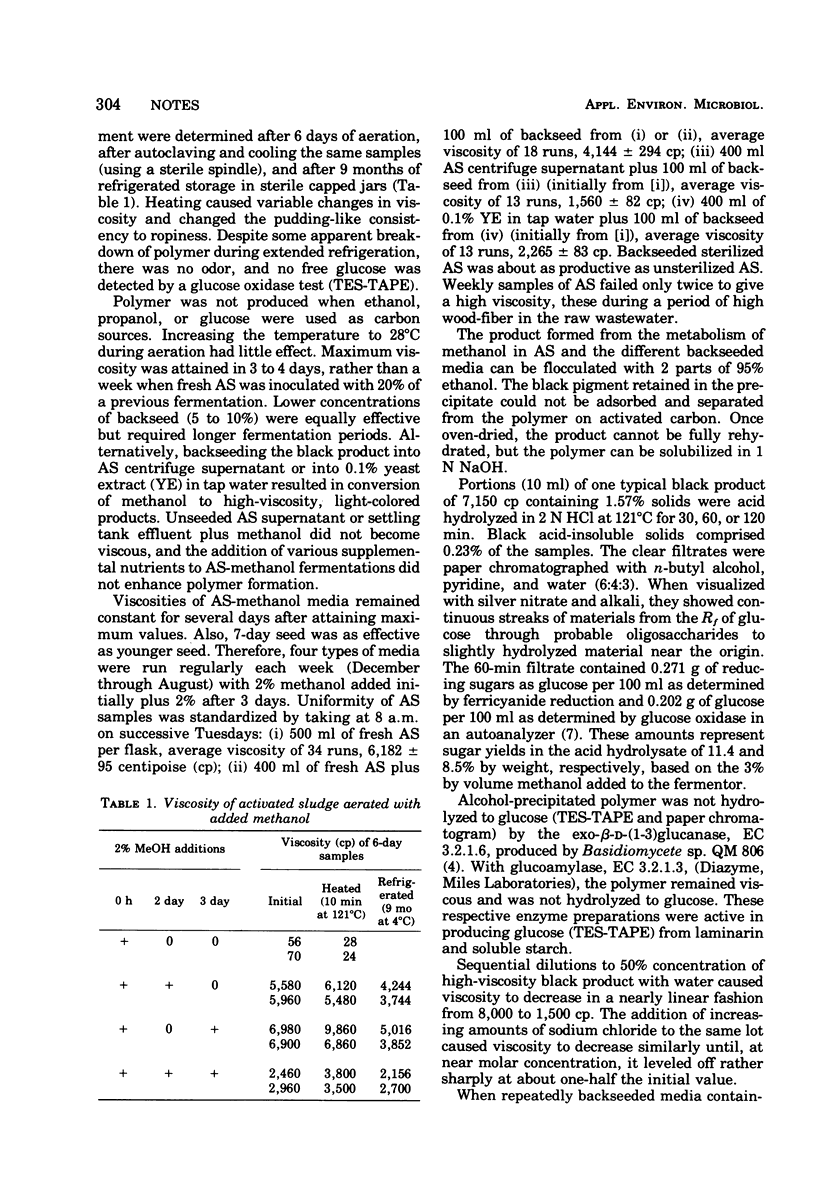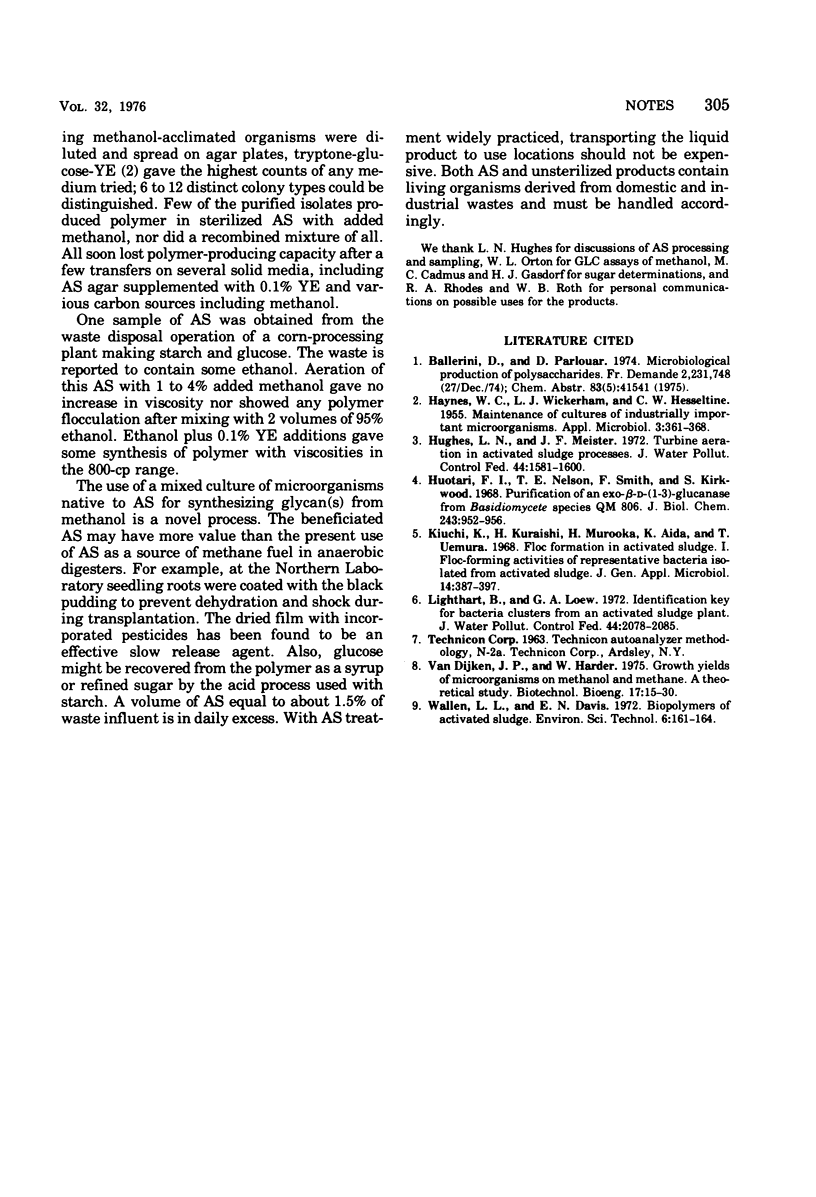Abstract
Aeration of activated sludge with 3 to 4% added methanol for 5 to 7 days yields an odorless, highly viscous (5,000 to 10,000 centipoise), black, pudding-like product containing glycan(s) linked other than α-1-4 or β-1-3. Backseeding gives maximum thickening in 3 to 4 days. Incomplete acid hydrolysis of the black product gives a 0.27% solution of reducing sugars (75% glucose) which is an 11.4% yield from the added methanol. Backseeding into either centrifuge supernatant or 0.1% yeast extract in tap water gives a light-colored polymer. Viscosity decreases during extended sterile cold storage. A 5% salt addition lowers viscosity one-half. From 6 to 12 colony types appear on plating backseeded media, but none of these isolates is a reliable polymer former.
Full text
PDF


Selected References
These references are in PubMed. This may not be the complete list of references from this article.
- HAYNES W. C., WICKERHAM L. J., HESSELTINE C. W. Maintenance of cultures of industrially important microorganisms. Appl Microbiol. 1955 Nov;3(6):361–368. doi: 10.1128/am.3.6.361-368.1955. [DOI] [PMC free article] [PubMed] [Google Scholar]
- Huotari F. I., Nelson T. E., Smith F., Kirkwood S. Purification of an exo-beta-D-(1 bonded to 3)-glucanase from Basidiomycete species QM 806. J Biol Chem. 1968 Mar 10;243(5):952–956. [PubMed] [Google Scholar]


